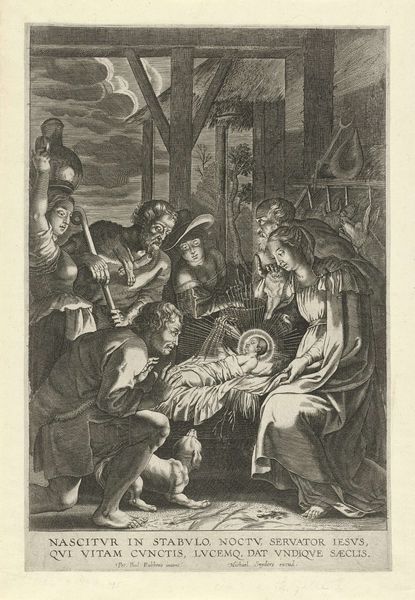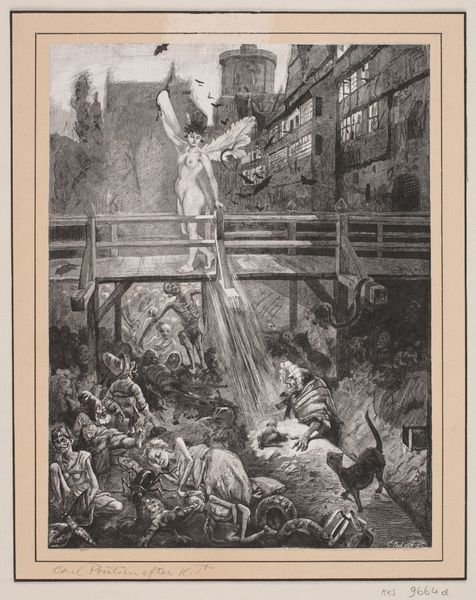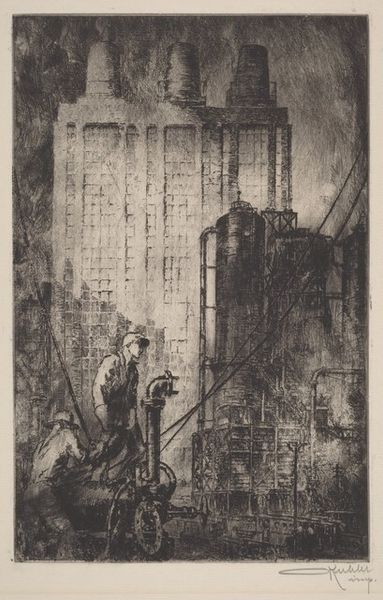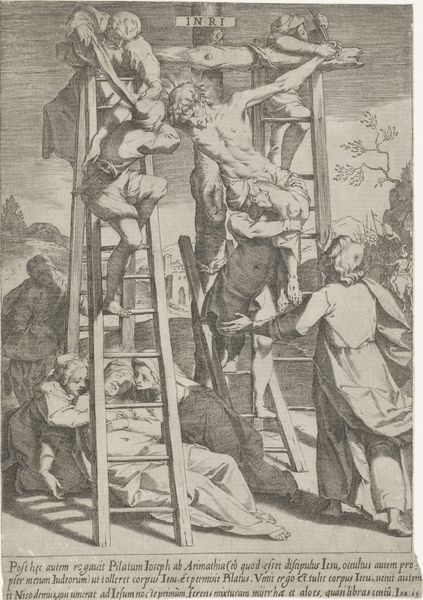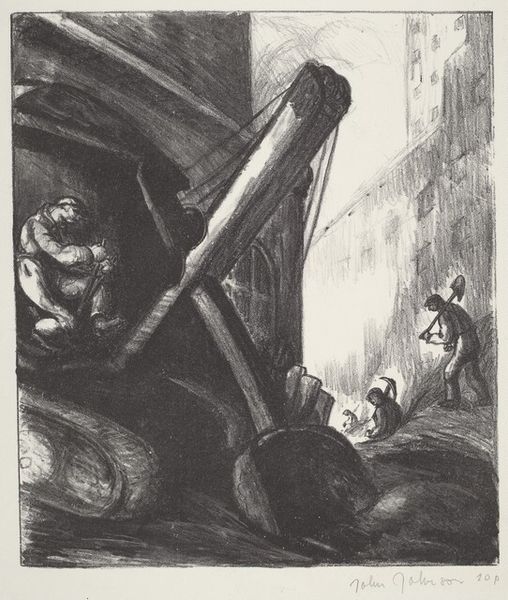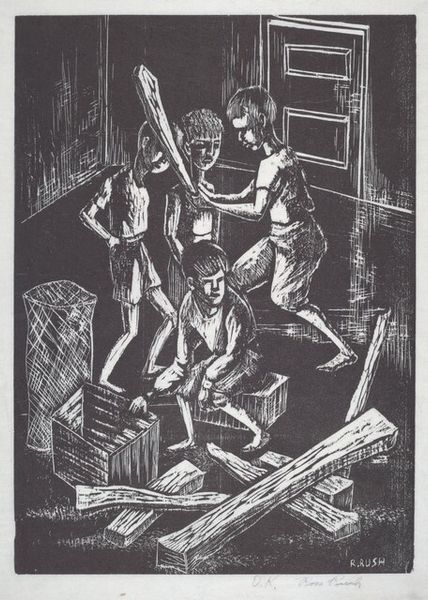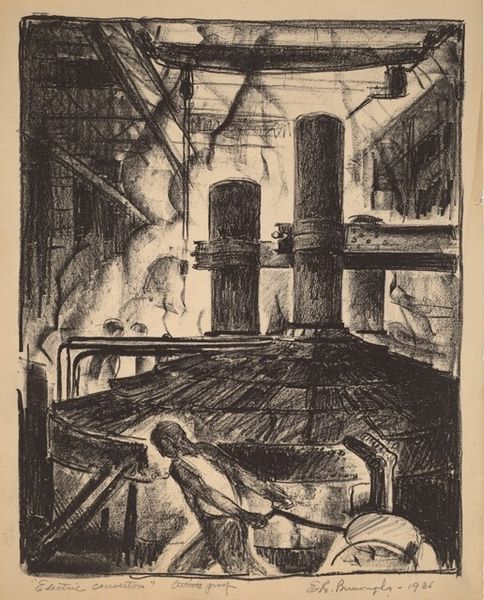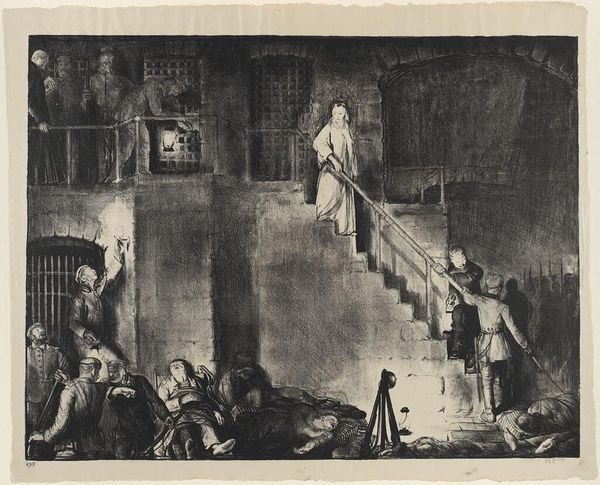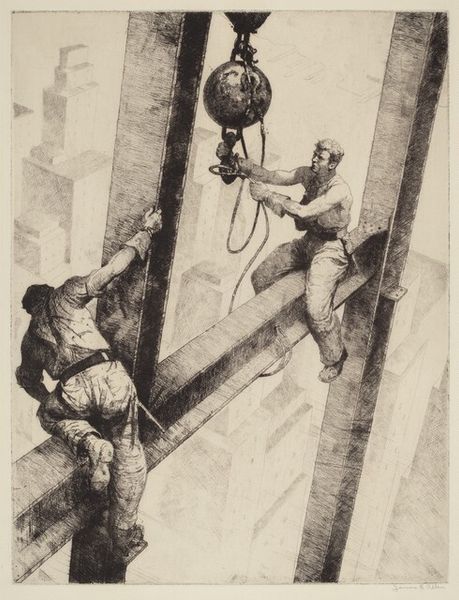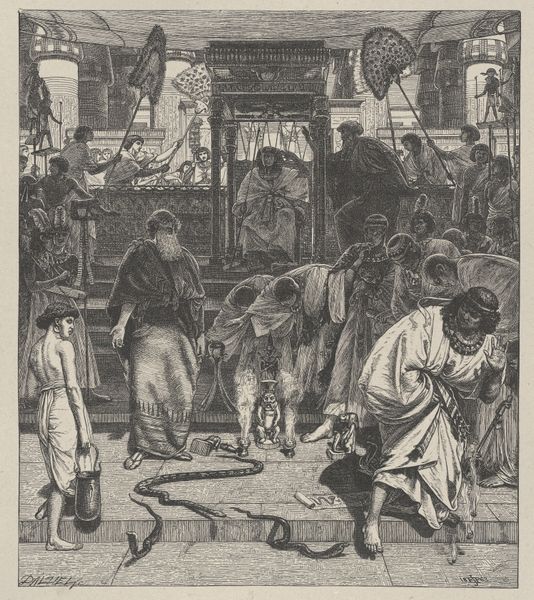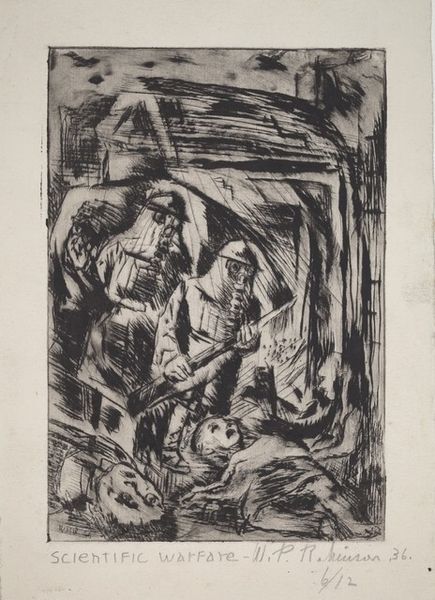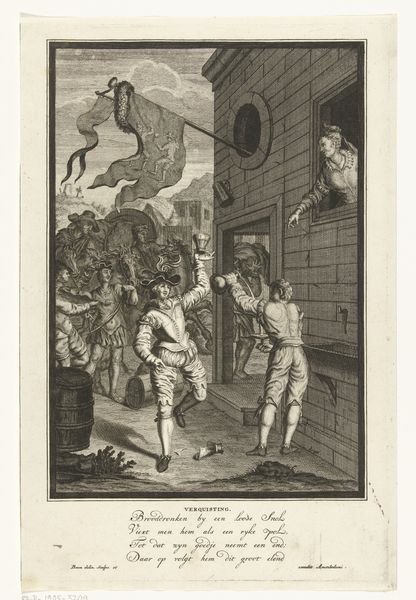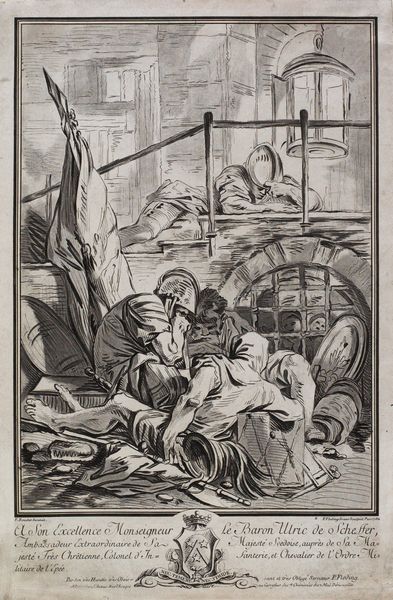
graphic-art, print, etching
#
graphic-art
# print
#
etching
#
charcoal drawing
#
figuration
#
pencil drawing
#
cityscape
#
history-painting
#
charcoal
#
realism
Dimensions: plate: 348 x 275 mm sheet: 426 x 337 mm
Copyright: National Gallery of Art: CC0 1.0
Curator: This compelling etching by Nathaniel P. Steinberg, simply titled "Construction," dates from around 1935. Editor: It's immediately striking—the high contrast, the dizzying perspective. I feel dwarfed by the scale of it all. It's… urgent. Curator: Steinberg captures the muscularity of urban growth. Think about the socio-political context: the New Deal, the WPA, and the iconography of the working class as powerful agents of change. Editor: Right, and that's evident not just in the subject, but also the composition. The men dominate the foreground. Look how their bodies intertwine with the steel beams and towering buildings—it's almost a dance of labor. It's definitely masculine but the cost is clear with what looks to be several workers laying down at the base of it all. Curator: And the architecture, while monumental, isn't idealized. It's gritty, actively being built. Notice the varied positions and interactions among the workers—some are resting while others climb with tools in hand—this isn't just about celebrating industry, it is about recognizing their human presence within industry. Editor: Yes, there’s that powerful tension. We see their contributions and humanity. But the looming skyscrapers, the lack of safety nets... it highlights their vulnerability, too. Curator: Considering it was made during the Depression, that vulnerability is even more poignant. Think about the representation of labor then, and its connection to identity and economic precarity. This etching becomes a document of both progress and the human cost of that progress. Editor: So much is being communicated through this limited palette. I initially saw it as a straightforward ode to progress, but the layering of perspectives has created further consideration. Curator: Absolutely. It reveals complexities we often overlook in historical narratives of construction and ambition. Editor: A perspective to reflect on next time you find yourself in the modern skyline. Thanks for pointing out all that I should think about further.
Comments
No comments
Be the first to comment and join the conversation on the ultimate creative platform.
